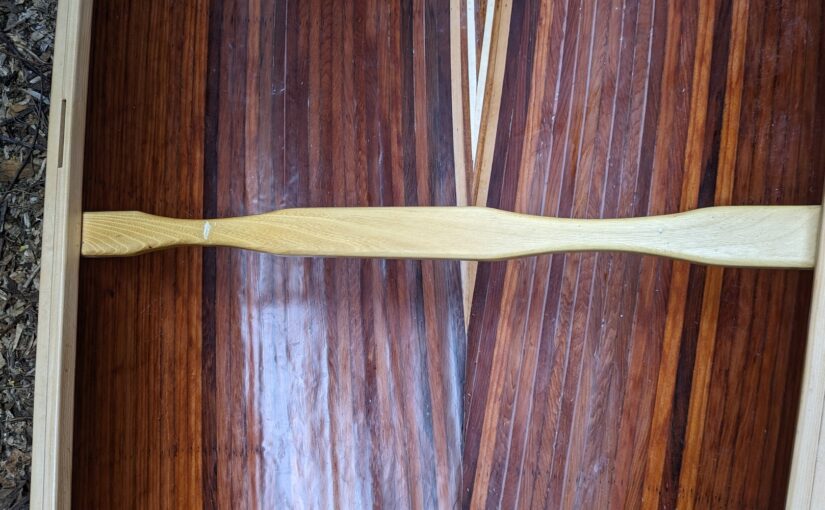You’ll remember Joel and I had some terminology disagreements about names of boat parts when used by ships or canoes. To save you the effort of looking up that conversation, here’s a handy reference.
| A Part of a Boat | Ships use these for… | Canoes use these for… | Kayaks use these for… |
|---|---|---|---|
| Seat | What is a seat? You sit on a thwart. | Sitting upon. | Wet Exit Practice. |
| Yoke | No Yokes. You carry a boat with a trailer. | Carrying a canoe. | Naught. You would look stupid with a kayak on your head. It looks like you’re wearing a pointy hat. |
| Thwart | Sitting upon. | Keeping the shape of the canoe. They are NOT for sitting upon. | Fending off attacks by sea lions. |
| Deckplate | Covering nasty places below decks | Maintaining the shape of the bow and stern. They are NOT for lifting the canoe. | No plates – only hatches. |
| Breastplate | Maintaining the shape of the bow and stern | No breasts on a canoe. | Women wear these when fending off attacks by sea lions. |
You’ll note there is disagreement. About thwarts in particular.
Since we’re building a canoe, we can ignore the shipbuilders and their mistaken terminology. Let’s focus on thwarts and canoes.
Why Thwarts?
During my years at Camp Widjiwagan in the BWCAW, we learned THWARTS ARE NOT TO BE SAT UPON. This isn’t just some sort of misguided dogma; seriously, if you sit on a canoe thwart you’ll eventually break it or rip it off the gunnels. They are strong from end to end – not from top to bottom. Ship thwarts are beefy and will support your weight. When we’re talking about canoes, thwarts maintain the shape of the gunnels and are as light as possible.
Each piece attaches to the gunnels in different ways and serves different purposes:
- Seats support the weight of the paddler. Their force is downwards from the gunnel.
- Thwarts keep the shape of the boat. This force presses outward from gunnel to gunnel.
- Yokes support the weight of the boat when it is being carried. They apply force to the gunnel from the top of the boat.
- Deckplates maintain the shape of the bow and stern. Like thwarts, they push outwards from gunnel to gunnel. Like thwarts, they will rip out if you use them to lift the canoe.

On our canoe, you’ll notice different mounting solutions. We reinforced the gunnels and bolt the seats and yokes in place. Deckplates are glued in place. We attach the thwarts with screws from underneath.
If we chose to, we could beef up the attachments to account for mishandling by campers or other acts of God. We could have built thicker thwarts so you could sit on them. We could have screwed in the deckplates from the side so you could use them to lift the boat. But we chose to build a canoe that fits our level of experience; in exchange, we get a lighter boat with less hardware.
The Position of Two Thwarts
Seventeen foot canoes have two seats, two thwarts, and one yoke. Janell and Rich spent a lot of time figuring where the seats should attach and I follow their guidance. Yokes should be close to the balance point of the boat, which in this boat is the geometric center of the boat. Again, Rich and Janell did the math on this one. That leaves me with placing two thwarts.

The bow thwart is placed almost directly behind the bow seat. Close to the seat provides more room for the duffer (a non-paddling passenger) or gear. Too close to the seat and it digs into the back of the bow paddler’s tender tooshie. I have enough experience with canoes to be confident I can eyeball this thwart’s location.
Of course, I measure from the bow to each intersection of thwart and gunnel to make sure it is parallel. Then I measure from the back of the seat. Twice. Paranoia, etc. I fill a Duluth pack with paper and set it in the canoe to make sure there is enough room between the yoke and the thwart. I use C-Clamps to hold it in place so I can come back later to measure it again.
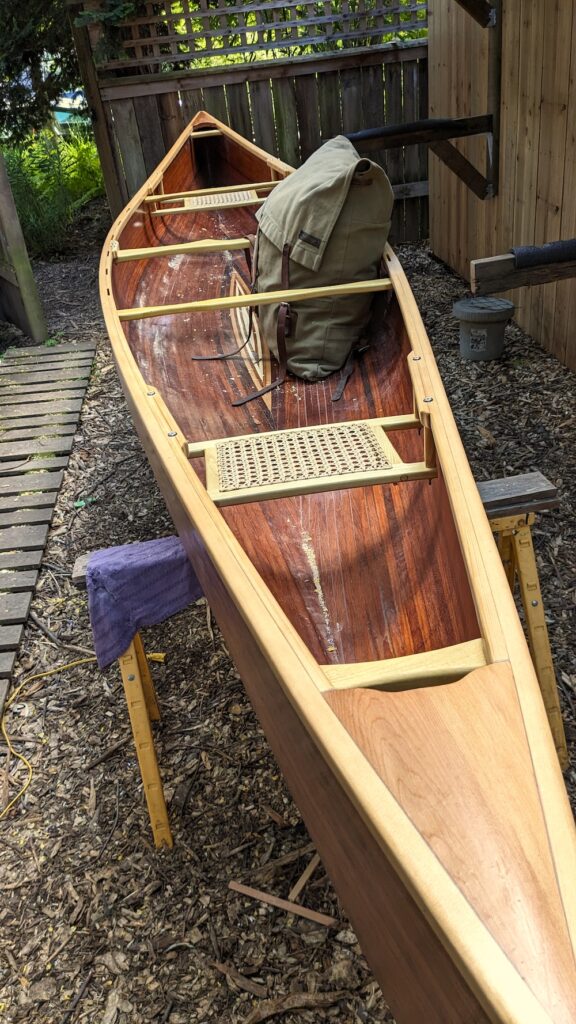
The placement of the stern thwart is less obvious. It will go between the stern seat and the yoke – that’s obvious. Too close to the yoke and there won’t be room for packs. Too close to the stern and there won’t be room for my legs.

I also have to be mindful of the guppers. These are gaps in the gunnels to allow water to drain out when the boat is tipped on its side. Guppers don’t allow any room for screw holes, so the thwart will need to be placed somewhere they aren’t. Fortunately, Janell and Rich only placed a few of these slots in the gunnels, so I have lots of room to play with.
I move the thwart back and forth. Measure. Move. Consider close up and far away. It’s a best guess, but I’m pretty sure it belongs right…here. I clamp it in place and hope I didn’t overlook something.
Fear of Drilling
Attaching anything to the gunnels scares me. Like I mentioned, I’m apt to crash through projects with a focus on function, rather than how things look. I don’t want to goob up these beautiful gunnels. So I’m measuring once, twice, three times. I take a break, then measure again. I step back and consider if this is what I really want to do. If we were working on this canoe together, it would make you crazy. Just drill the damn hole!
Attaching the thwarts to the gunnel is awkward and frustrating. I (carefully) measure where I can place two holes on each end of the thwart. The holes need to line up with the wood on the inside and underside of the gunnel. Easy enough; this is just a ruler and a drill press.
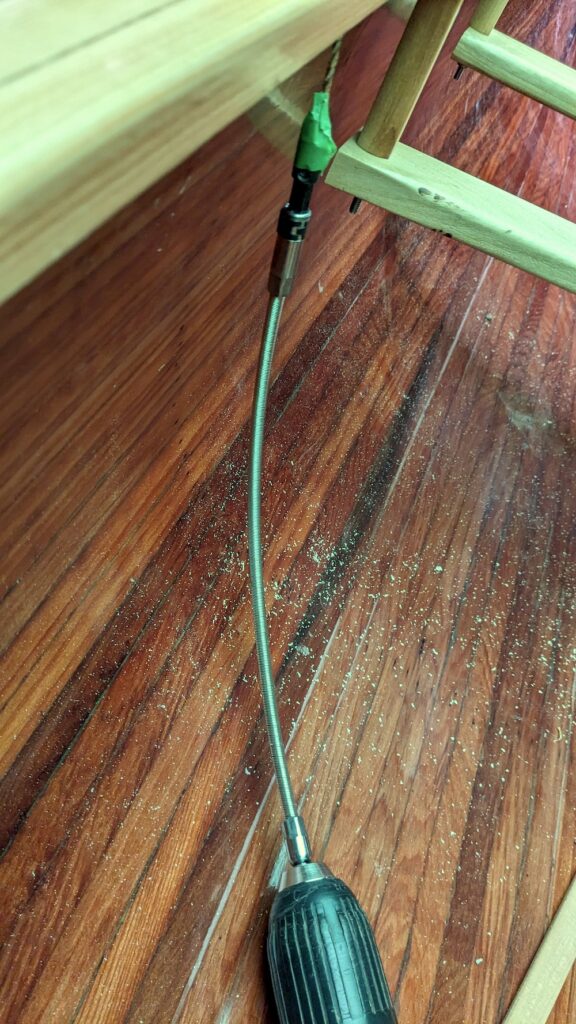

Driving a screw into the gunnel means I need to pre-drill a hole, lest I risk splitting the wood. This is the most frustrating thing I have ever done, short of reducing equations in junior high algebra when I would rather be goofing off in the photo lab. These holes need to be drilled from the bottom up so they aren’t visible from the outside. I can’t see what I’m doing. Plus – the curved bilge of the canoe prevents the drill from being square to the gunnel.
I need a two-inch long drill with laparoscopic eyepiece. Don’t have one that I can find, not in my basement, anyways. But I do have a flexible drill extension and I manage to jerry-rig an attachment to the drill bit. This is a mediocre solution, but it drills holes. Sort of in the right place, and sort of at the right angle.
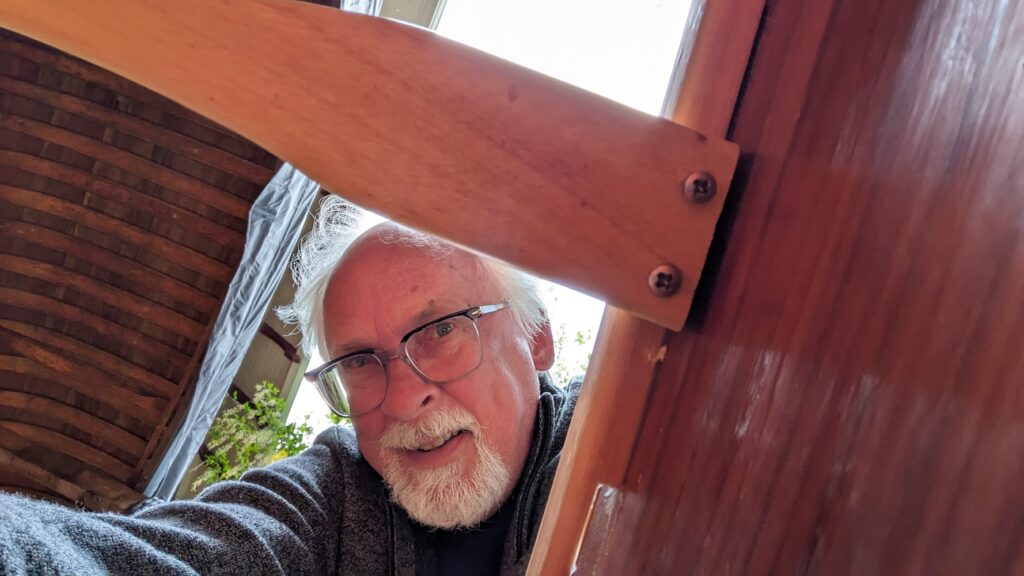
The screws hold the thwarts in place, but I have to apply a lot of pressure to the screwdriver to avoid stripping out the head of the screw. Again – slow and frustrating work.
About Our Yoke
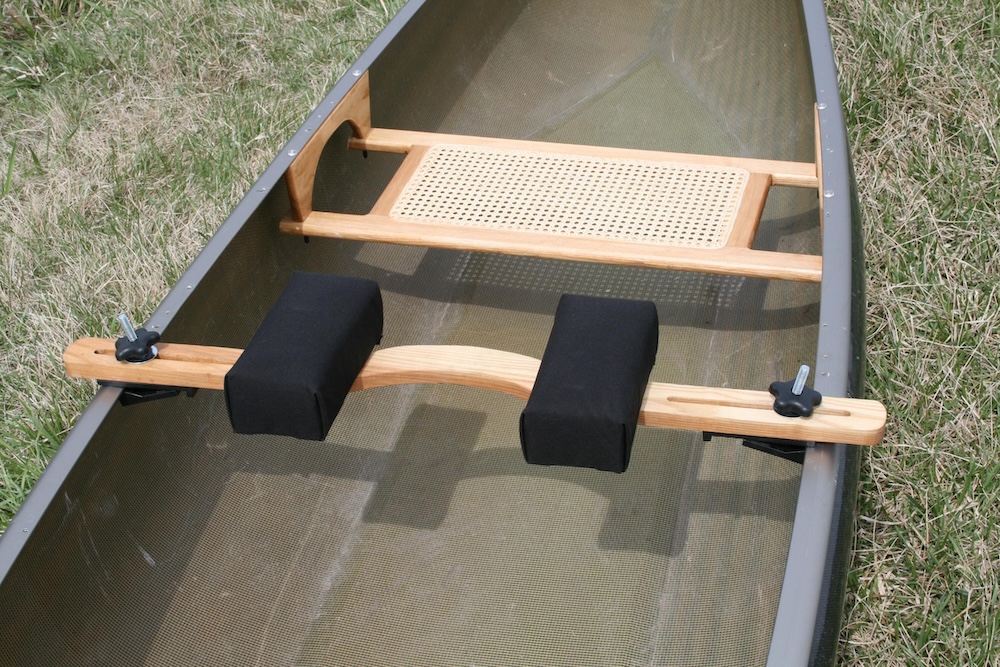
The force on a yoke supports the weight of the canoe. It would make sense to mount the yoke on top of the gunnel, rather than underneath. At Widji, most of our canoes had the yoke attached in this way. It makes for a robust carry over portages that will withstand many summers without busting out the gunnels.
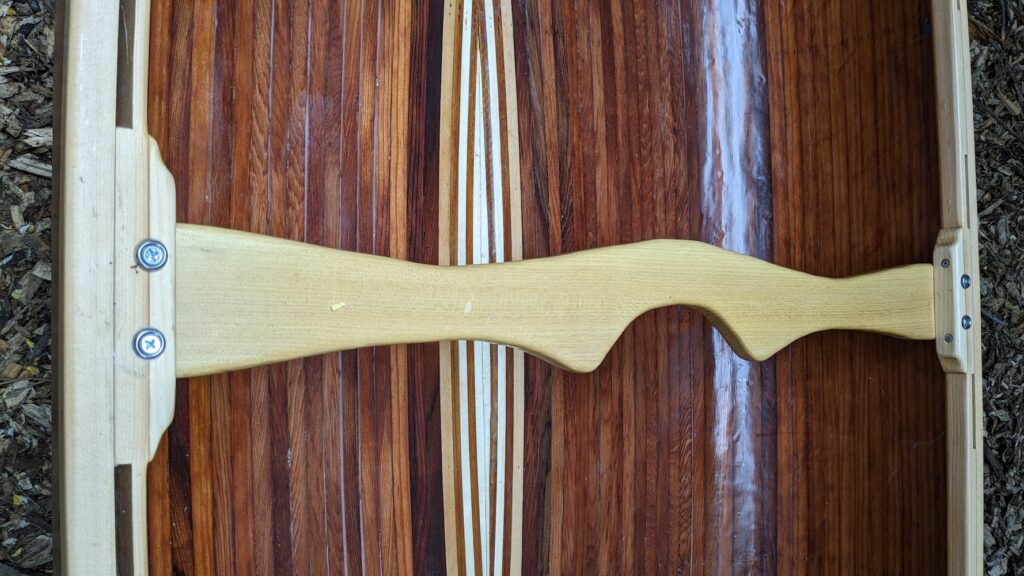
However, our canoe has the yoke attached underneath the gunnel. We planned this and included an extra reinforcement to provide a solid strip of wood to support the weight. It was an aesthetic decision. If I was the canoe master at Widji, I would opt to place the yoke on the top of the gunnel because, well, campers and portages and you-get-the-idea.
Ready for the Water
That’s it. There is nothing more to do before we put it on the water. Will it float? Did we make the cedar strips too thin? Did we use enough fiberglass? Is there too much rocker? Can this boat turn? Or does it do nothing except turn?
Stand by for our next exciting episode…

